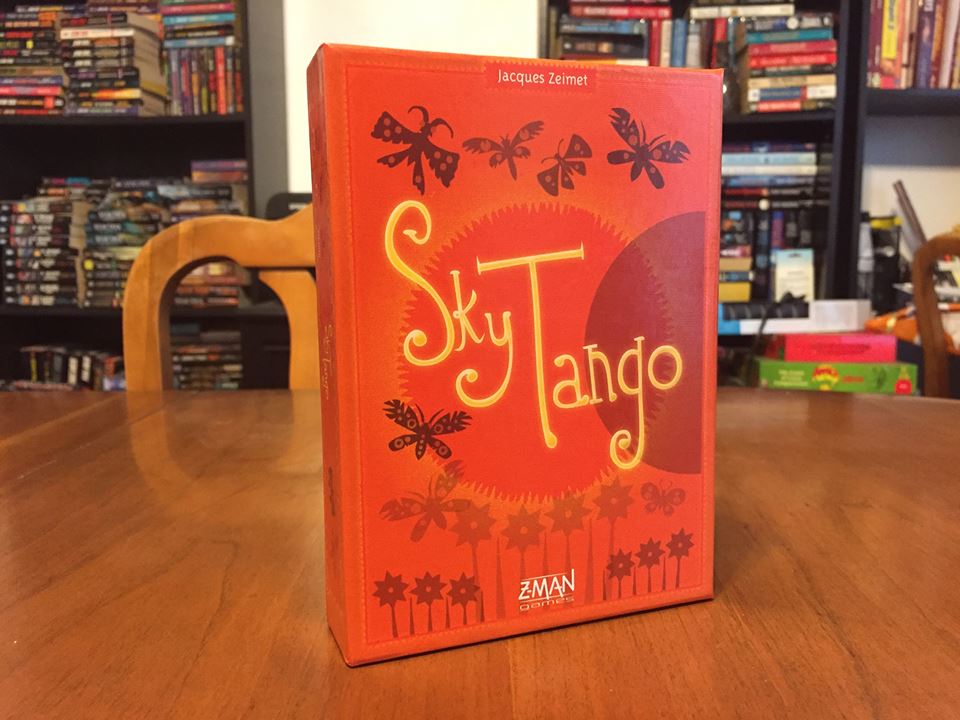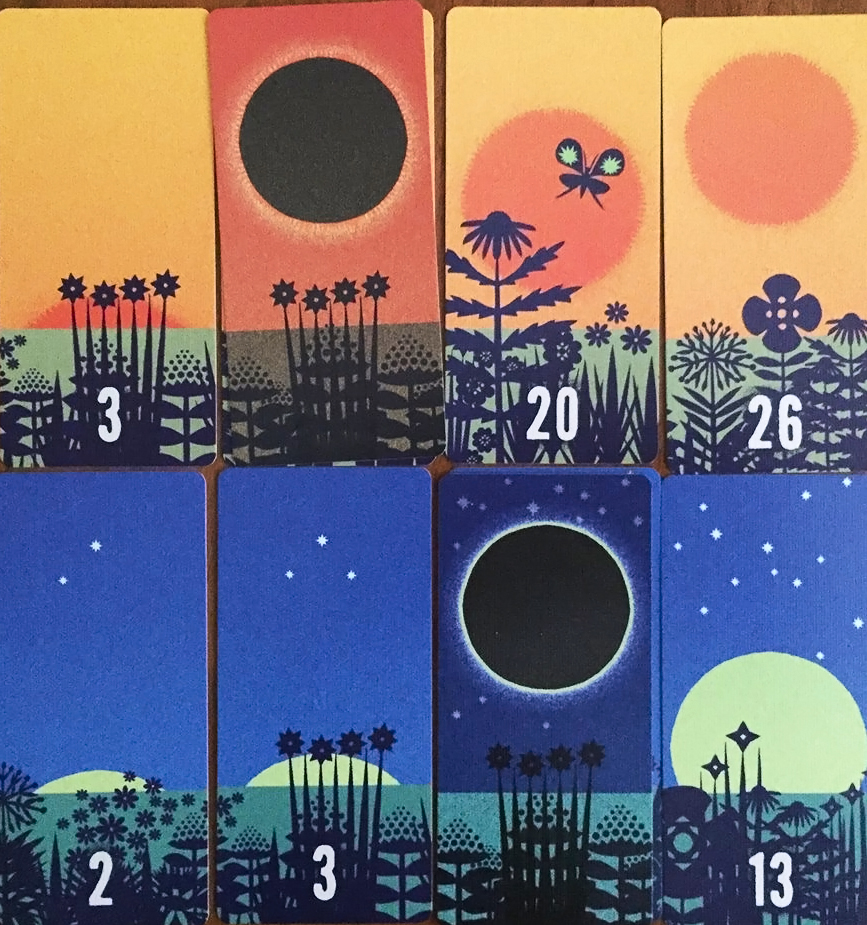The name of this title is pretty apt, considering the theme. In “Sky Tango”, players will be laying down sun and moon cards onto separate rows in ascending order with the intent on trying to earn the most points. There’s obviously a bit more to it than that, what with solar, lunar, and total eclipses hovering over players. Let’s jump right in and see what the sky has in store for us, shall we?
Components
The game includes 68 cards and a rulebook.
Setup & Gameplay
All the cards are shuffled to form a draw deck and each player receives five cards to form their starting hand. Youngest player goes first.
On a player’s turn, they must either:
1) Lay down a card onto one of their two rows. A player can only have two rows: one sun and one moon row. It can be placed onto an opponent’s row if so desired. Cards must be placed in ascending order and may never be placed between cards, only to the left or right ends of the row. If a player plays a card with an animal on it, they get to go again. A player only draws five new cards if they run out. If the draw pile runs out, the discard pile is shuffled to form a new draw deck. Eclipse cards are placed on their appropriate row, on top of other numbered cards. It can be covered by another number card, so as long as the numbers still obey the ascending order rule.
OR
2) Clear one or more rows if five cards or more. This can only be done if there are five uninterrupted number cards in a row. Visible eclipse cards (ones on top) break this chain. Any gaps in long rows as the result of clearing cards are filled by moving the two sections together. Cleared cards go into a victory point pile.
A total eclipse occurs when a player can do neither action. In this case, the player discards ALL the cards in front of them, along with the cards in their hands. They draw five more on their next turn. When the draw pile runs out, players get one last turn to play/clear cards. After that, players calculate their score. Each cleared sun/moon card is worth one point while each card in a row or in a hand is worth negative one point. Eclipse cards have a value of zero. The player with the most points, wins the game!
Editor’s Note: The above doesn’t cover all of the rules found in the manual, but should give you an idea as to how the game is played.
The Review
“Sky Tango” isn’t a bad little game. It’s certainly easy enough to play, though hardcore strategists might find this a bit lacking. It reminds me a smidge of “Lost Cities” (the card game), but with the ability to affect other player’s rows and actually clear out rows you’ve created. The artwork is pretty good and play is relatively quick, which works great when you’re using it as a filler in between longer play sessions. The rules don’t take long to learn, though there are a few stipulations that could have been summarized/emphasized at the end of the rulebook for easy reference. Some of the manual was a bit scatter-brained too…that is, it could have been organized better. For example, the box says it supports 2-4 players, yet there’s a “4 Players” section that seems to force them into teams of two. Can they play solo or not? The manual doesn’t specify.
It can be a little “in-your-face” as you are encouraged to mess up your opponent’s rows by creating a huge gap between two numbers (placing an 18 after a 3, for example). This will force them to eclipse one of the two and try to undo the damage by playing another card on top of it, or they could opt to force a total eclipse and discard everything for a fresh start. Since you’re penalized at the end of the game for how many cards you have out in rows and in your hand, creating long rows is a risky business. They might allow you to clear cards a bit more easily with the help of eclipse cards, but if you’re stuck with them when the game ends…ouch.
“Sky Tango” is a pretty fun and light casual game. Fans of such games should take a look at this one, though it’s not as engaging as others you might find on the market. The manual could most certainly stand to be improved.
Final Verdict: 5/10
—


